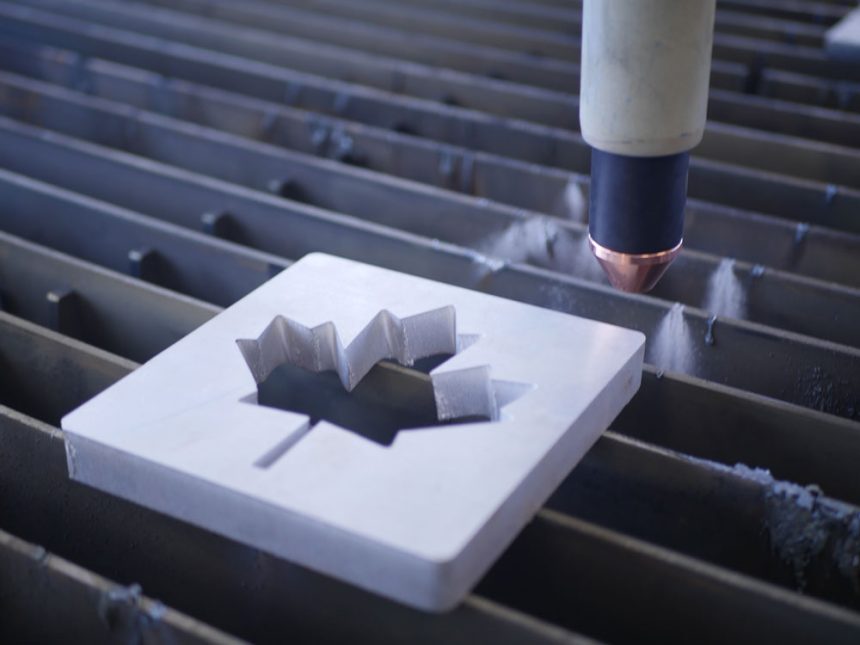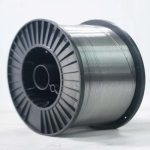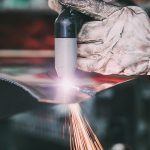Aluminum alloys continue to gain popularity in metal fabrication worldwide due in part to the ease with which these alloys can be fabricated—bent, welded, and most importantly, cut. The ease at which aluminum can be cut to shape and size can have a big influence on the cost and quality of subsequent operations and the final component itself. As with steel, the use of plasma arc cutting (PAC) on aluminum alloys is a popular choice for quickly producing high-quality cuts.
Speed is one of the greatest justifications for plasma arc cutting aluminum over mechanical cutting methods. Laser cutting can certainly exceed the speed of plasma but is not without its own process disadvantages. Waterjet cutting certainly has advantages over plasma from a metallurgical and edge quality perspective. Instead, cutting aluminum with plasma provides an excellent balance of speed, quality, and cost. Compared to these other processes, it has a notably lower capital investment and is also simpler to implement as a handheld process for in-service repairs in both the field and shop.
Safety First
As with any industrial equipment, proper safety protocols should be observed during installation, maintenance, and operation of plasma cutting equipment. Always use the appropriate personal protective equipment, including adequate ventilation, for the conditions of the process and the working environment. Refer to product documentation for additional information related to plasma cutting safety and operation.
Tips for Starting to Plasma Cut Aluminum
Base metal preparation is generally low effort when plasma arc cutting aluminum. Unlike welding, the intense heat and velocity of the plasma column can push through thick aluminum oxide layers once the plasma column is developed. Arc initiation—starting the cut—benefits from removing the oxide layer in the area where the work lead is connected to the workpiece and the area to be pierced. In both places, use a stainless-steel wire brush to break up the aluminum oxide layer. Starting cuts some distance from and with a smooth transition into the cut path is also beneficial to improving the cut quality.
“Be aware that plasma cutting is a thermal process that can cause microstructural changes in heat treatable aluminum alloys.”
Using an amperage and travel speed set respective to the base metal thickness often produces cut edges that have good to very-good surface finish that can sometimes be left as-is depending on the quality and aesthetic requirements of the cut, even when cut edges will be consumed by subsequent welding. The use of air as a plasma gas when cutting aluminum is an economical choice that provides acceptable results in many “general purpose” applications. Using air does introduce some degree of oxygen into the weld pool which negatively influences weld quality.
For this reason, mechanical removal of the cut edge may be desirable prior to welding when the fabrication documents have stringent porosity requirements. Although weldable cut edges are achievable when using air as a plasma gas, they can be a hindrance to easily producing conforming components. In applications having stringent acceptance criteria regarding weld porosity, the use of a pure nitrogen plasma gas can help make cut edges easier to weld with lower rates of porosity and associated rework.
Be aware that plasma cutting is a thermal process that can cause microstructural changes in heat treatable aluminum alloys. Crack-sensitive alloys such as 6061 are typically recommended or required to perform some mechanical finishing of the cut edge to remove microscopic cracks that may be present on the cut edge. These hard-to-detect microcracks can propagate if left in place. This concern is typically not an issue with the 1xxx, 3xxx, and 5xxx series sheet and plate aluminum that is less crack susceptible, but 6061 is a popular choice for extruded shapes.
Improving & Maintaining Cutting and Gouging Speed
Cutting speed is influenced by the cutting amperage selected—the size of the equipment—and the choice of plasma gas. Again, for most aluminum cutting applications, the use of compressed air provides suitable results considering the limitations of handheld use. Nitrogen/hydrogen and argon/hydrogen shielding gases to exist as an improvement to speed in mechanized applications.
As with welding aluminum, quality consumables are critical to achieving good quality at high travel speeds. Always use the recommendations provided by the original equipment manufacturer regarding the optimal consumables to be used. Be sure to periodically check the consumables for excessive wear, which may become apparent before cut quality severely degrades. Excessive dross and poor edge quality are good signs that troubleshooting should begin at the consumables. If all is well, dross should be removable with a wire brush, if at all.
Plasma for Every Application
Adding to the inherent advantages of the plasma arc cutting process, a wide range of equipment sizes are available catering to different use cases. Many fabricators and manufacturers use lighter duty plasma cutting power sources with built in air compressors for mobility on the production floor, in the field plasma cutters often draw power from portable generators or welding machines that also provide air compression like Miller’s Big Blue Air Pak. Physically larger units can be powered via mains or portable generators and are able to cut through thicker materials and run for longer periods of time while out in the field, while even larger mains-powered equipment can do the same in the production environment.
While plasma is an industry standard for quickly producing high-quality cuts on aluminum, it is not without some inherent disadvantages. Nonetheless, the benefits of plasma cutting aluminum often significantly outweigh the disadvantages, especially after equipping yourself with personal protective equipment, an understanding of plasma cutting theory, safety, and best practices.










